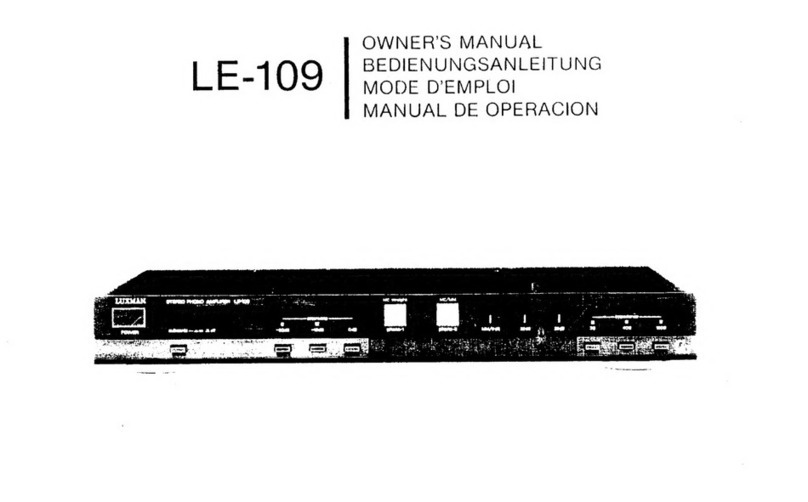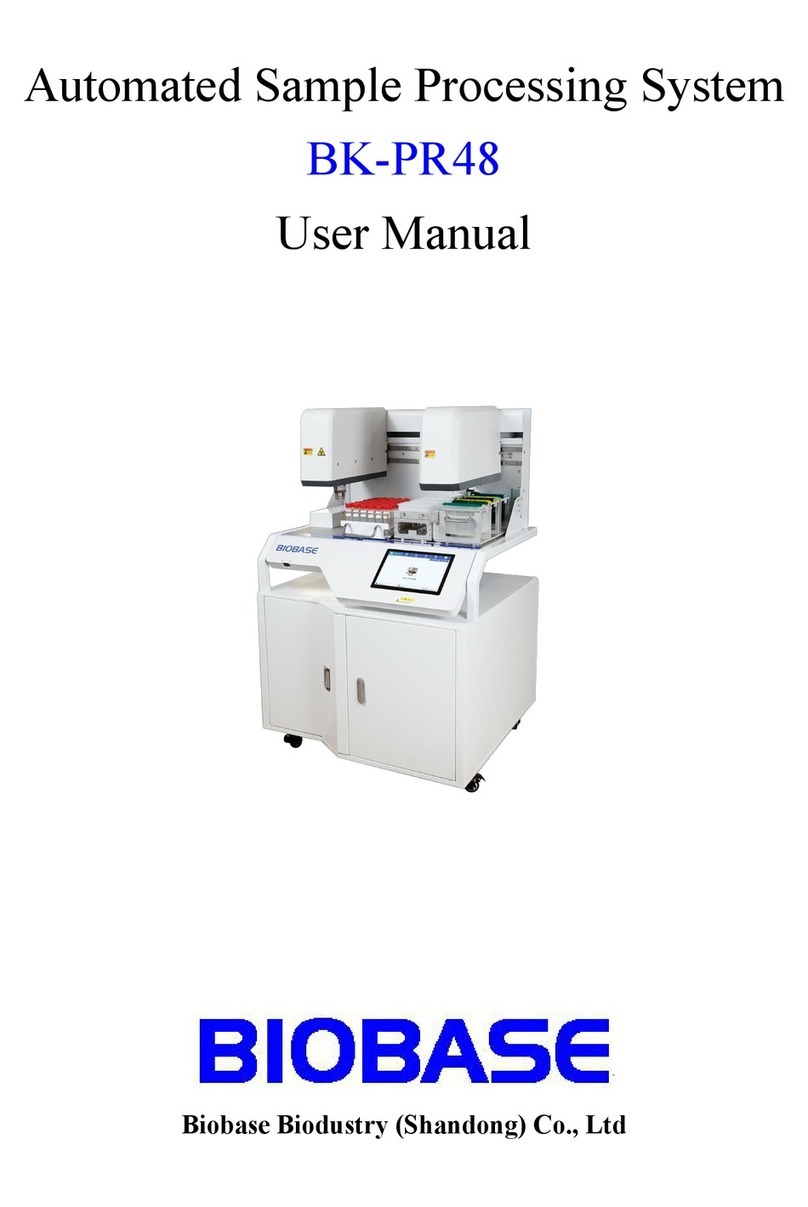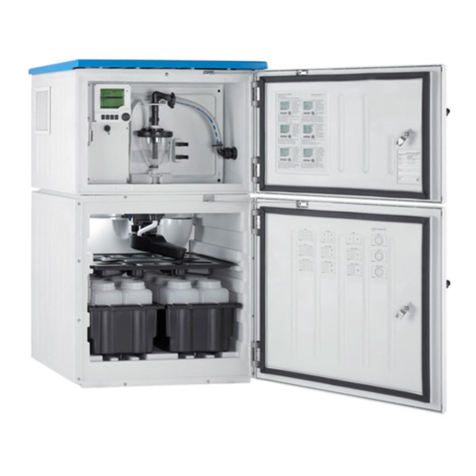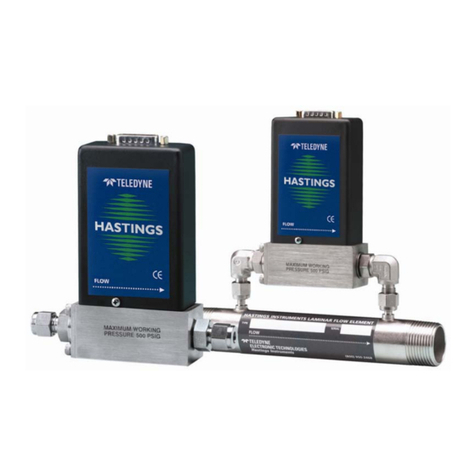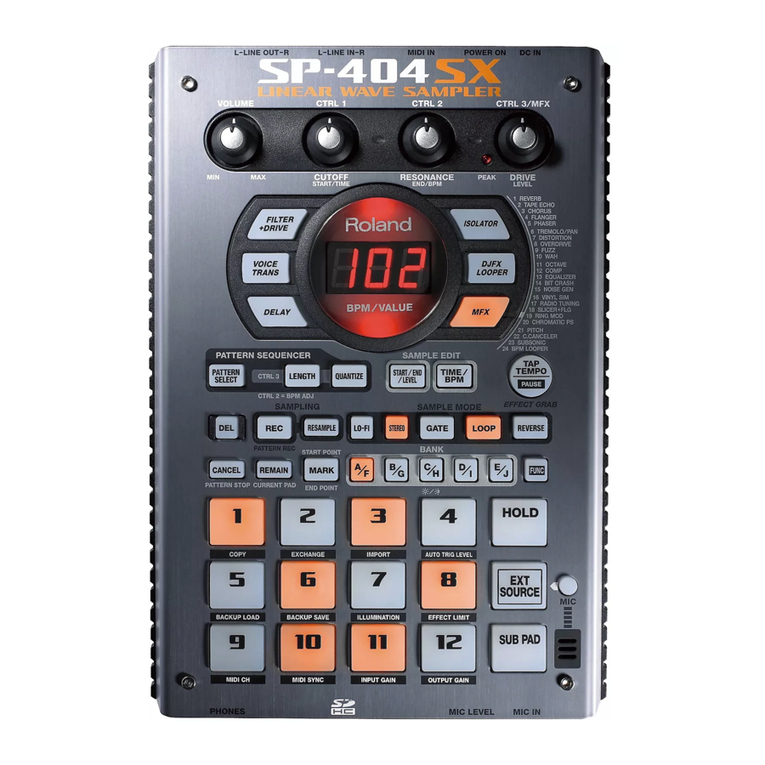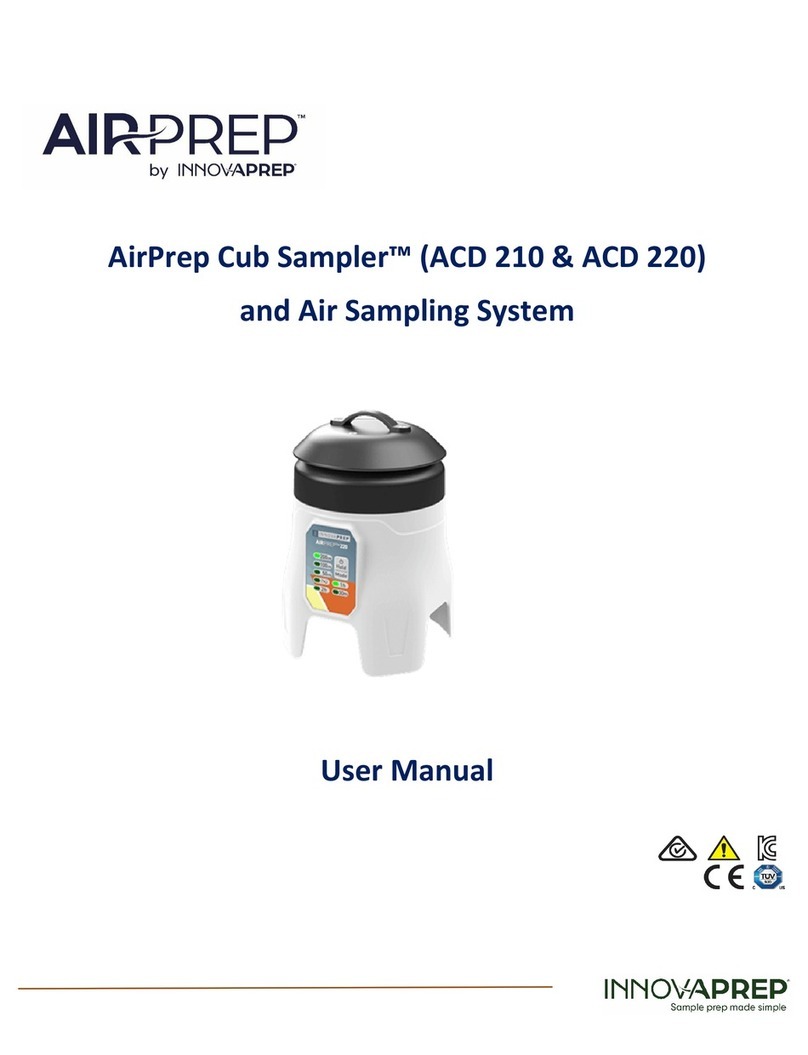Tisch Environmental TE-5200 User manual

TE-5200 2 Operations Manual
TE-5200

TE-5200 3 Operations Manual
Welcome
We are the experts in high volume air sampling, lead sampling, lead
samplers, particulate monitoring, particulate emissions, pesticide
monitoring, pesticide sampling, total suspended particles, particulate
sampler, Federal Reference Method PM-10, Federal Reference Method PM2.5,
EPA Method TO-4A, EPA Method TO-9A, EPA Method TO-13A. TEI is a family
business located in the Village of Cleves, Ohio. TEI employs skilled personnel
who average over 20 years of experience each in the design, manufacture,
and support of air pollution monitoring equipment. Our modern well-
equipped factory, quality philosophy and experience have made TEI the
supplier of choice for air pollution monitoring equipment. Now working on
the fourth generation, TEI has state-of-the-art manufacturing capability and
is looking into the future needs of today's environmental professionals.
.
Assistance
If you encounter problems or require detailed explanations, do not hesitate
to contact Tisch Environmental offices by e-mail or phone.
Toll Free: (877) 263 -7610 (TSP AND-PM10)
Direct: (513) 467-9000
FAX: (513) 467-9009
sales@tisch-env.com
www.tisch-env.com

TE-5200 4 Operations Manual
Table of Contents
Welcome ________________________________________________________________________ 3
Assistance________________________________________________________________________ 3
Introduction _________________________________________________________________ 6
EPA Standards ____________________________________________________________________ 6
Safety Precautions _________________________________________________________________ 6
Important Safety Instructions ________________________________________________________ 6
Electrical Installation _______________________________________________________________ 7
Do Not Abuse Cords________________________________________________________________ 7
Extension Cords ___________________________________________________________________ 7
Product Description ___________________________________________________________ 8
Introduction ______________________________________________________________________ 8
Applications ______________________________________________________________________ 8
Calibration Requirements ___________________________________________________________ 8
Calibration Kits____________________________________________________________________ 9
Parts ____________________________________________________________________________ 9
Assembly___________________________________________________________________ 11
Operations _________________________________________________________________ 12
Calibration Worksheets ____________________________________________________________ 12
Calibration Procedure _____________________________________________________________ 12
Example Problems ________________________________________________________________ 16
Sampler Operation________________________________________________________________ 23
Troubleshooting _____________________________________________________________ 24
Maintenance and Care________________________________________________________ 26
Motor Brush Replacement _____________________________________________________ 27
Warranty __________________________________________________________________ 30

TE-5200 5 Operations Manual
Assembly Drawings __________________________________________________________ 31
TE-5005 Blower Motor_____________________________________________________________ 31
TE-5003 Filter Holder ______________________________________________________________ 32
Calibration Worksheet Sample _________________________________________________ 33
Calibration Certificate ________________________________________________________ 34

TE-5200 6 Operations Manual
Introduction
EPA Standards
The following manual will instruct you in the unpacking, assemblage,
operation, calibration, and usage of the corresponding Tisch Environmental
product. For information on air sampling principles, procedures and
requirements and to ensure compliance with government regulations please
contact the local Environmental Protection Agency Office serving your area
or visit www.epa.gov.
Safety Precautions
Before using Tisch Environmental products, always be sure to review the
corresponding operations manuals and take all necessary safety precautions.
Tisch Environmental products are to be used only for the purposes specified
by operations manuals and by Tisch Environmental personnel. Tisch
Environmental cannot guarantee the safe usage of its instruments in
procedures that do not adhere to Tisch Environmental guidelines and
standards. If you have concerns about the safety of your product or questions
about safe practices, contact Tisch Environmental by phone or e-mail to
speak with a representative.
Important Safety Instructions
Read and understand all instructions. Do not dispose of these instructions.
Failure to follow all instruction listed in this manual may result in electric
shock, fire, and/or personal injury. When using an electrical device, basic
precautions must always be followed, including the precautions listed in the
safety section of this manual. Never operate this unit in the presence of
flammable materials or vapors are present as electrical devices may produce
arcs or sparks that can cause fire or explosions. Always disconnect power
supply before attempting to service or remove any components. Never
immerse electrical parts in water or any other liquid. Always avoid body
contact with grounded surfaces when plugging or unplugging this device is
wet or dangerous conditions.

TE-5200 7 Operations Manual
Electrical Installation
Installation must be carried out by specialized personal only, and must
adhere to all local safety rules. This unit can be used for different power
supply versions; before connecting this unit to the power line, always check if
the voltage shown on the serial number tag corresponds to the one on your
power supply. This product does use grounded plugs and wires. Grounding
provides the path of least resistance for electrical currents, thereby reducing
the risk of electric shock to users. This system is equipped with electrical
cords with internal ground wires and a grounding plug. The plug must be
plugged into a matching outlet that is properly installed and grounded in
accordance with all local codes and ordinances. Do not modify the plug
provided. If plug will not fit outlet, have the proper corresponding outlet
installed by a professional, qualified electrician.
Do Not Abuse Cords
In the event that any electrical component of this system needs to be
transported, DO NOT carry the unit by its power cord or unplug the unit by
yanking the cord from the outlet. Pull the plugs, not the cords, to reduce
risk of damage to unit. Keep all cords away from heat, oil, sharp objects, and
moving parts.
Extension Cords
It is always advisable to use the shortest extension cord possible. Grounded
units require a three-wire extension cord. As the distance from the supply
outlet increases, you must use a heavier gauge extension cord. Using
extension cords with inadequately sized wires results in serious changes in
voltage, resulting in a loss of power and possible damage to equipment. It is
recommended to only use 10-gauge extension cords for this product. Never
use cords that exceed one hundred feet. Outdoor extension cords must be
marked with the suffix “W-A” (or “W” in Canada)to indicate that it is suitable
for outdoor usage. Always ensure that extension cords are properly wired
and in good electrical condition. Always replace damaged extension cords
immediately, or seek repair from qualified electricians before further use.
Remember to protect extension cords from sharp objects, excessive heat, and
damp or wet conditions.

TE-5200 8 Operations Manual
Product Description
Introduction
The High Volume Air Sampler is the recommended instrument for sampling
large volumes of air for the collection of TSP (Total Suspended Particulate).
The physical design of the sampler is based on aerodynamic principles which
result in the collection of particles of 100 microns (Stokes Equivalent
Diameter) and less. The TE-5200 TSP Tripod consists of a TE-5002 Anodized
Aluminum Tri-Pod Shelter, TE-5005 Aluminum Blower Motor Assembly, TE-
5003 8”x10” Stainless Steel Filter Holder, TE-5030 30” Slack Tube
Manometer, and TE-5010 Motor Voltage Control/Elapsed Time Indicator.
Applications
Ambient air monitoring to determine suspended particulate levels relative
to air quality standards.
Impact of a specific source on ambient levels of suspended particulates by
incorporating a "wind-direction-activation" modification which permits the
sampler to operate only when conditions are such that a source-receptor
relationship exists.
Monitoring of enclosed environments for relatively high levels of particulate
matter, particularly toxic materials.
Monitoring of emissions from large diameter vents where physical
conditions preclude the use of conventional stack-testing equipment.
Calibration Requirements
TE-5200 TSP Tripod High Volume Air Sampler should be calibrated:
Upon installation
After any motor maintenance
Once every quarter (three months)
After 360 sampling hours

TE-5200 9 Operations Manual
Calibration Kits
The TE-5028 is the preferred method to calibrate the TE-5200 TSP Tripod
High Volume Air Sampler. It simulates change in the resistance by merely
rotating the knob on the top of the calibrator. The infinite resolution lets the
technician select the desired flow resistance. The TE-5028 calibration kit
includes: carrying case, 30” slack tube water manometer, adapter plate, 3’
piece of tubing, and TE-5028A orifice with flow calibration certificate.
Each TE-5028A is individually calibrated on a primary standard positive
displacement device (Rootsmeter) which is directly traceable to NIST.
** It is recommended that each calibrator should be re-calibrated
annually for accuracy and reliability.
Parts
1. Tri-Pod Shelter Box - 27" x 21" x 20" 36 lbs
Tri-Pod Pan
TE-5200 110volt, 60hz
TE-5200X 220volt, 50hz
TE-5200XZ 220volt, 60hz

TE-5200 10 Operations Manual
Gabled Roof
TE-5001-10
Aluminum Blower Motor Assembly
TE-5005 110volt
TE-5005X 220volt
8”x10” Stainless Steel Filter Holder
TE-5003
30” Slack Tube Water Manometer
TE-5030
Motor Voltage Control/Elapsed
Time Indicator
TE-5010 110volt, 60hz
TE-5010X 220volt, 50hz
TE-5010XZ 220volt, 60hz
2. Leg Box - 49" x 3" x 3" 7 lbs
3 pcs –Anodized Aluminum Legs
TE-5200-10
*** Save the shipping containers and packing material for future use.

TE-5200 11 Operations Manual
Assembly
1. Open both boxes and remove items.
2. Take the three anodized aluminum legs and insert into the leg holders on
the tri-pod pan. Tighten the three thumbscrews to hold legs in place. Set
unit upright.
3. Put filter holder down into opening of tri-pod pan and screw blower
motor assembly onto it, gasket goes in between filter holder and blower
motor assembly.
4. Take tri-pod shelter lid and fasten to back of tri-pod shelter pan using the
4 - 10/24 x ½” screws that are installed in the back of the pan. Make sure
hinges are on outside of tri-pod shelter pan.
5. Take front catch piece and fasten to front of tri-pod shelter pan using 2 -
10/24 x ½” screws, which are taped inside of lid. The chain and “S” hook
are used to keep lid closed by putting through front catch piece.
6. On front of tri-pod pan, hang 30” water manometer and motor voltage
control/elapsed time indicator. Using instructions with manometer,
prepare it with green distilled water. Connect tubing from blower motor
assembly to the port on top of the 30” water manometer.
7. The blower motor assembly male cord set plugs into the female cord set
of the motor voltage control/elapsed time indicator.
8. The motor voltage control/elapsed time indicator male cord set plugs
into line voltage outlet. The motor will come on depending on what the
voltage control pot is set at on front panel. To adjust voltage, take
screwdriver and turn screw on control pot.

TE-5200 12 Operations Manual
Operations
Calibration Worksheets
Calibration worksheets can be downloaded from our website, www.tisch-
env.com. We recommend that you download the worksheet before following
the procedure below.
Calibration Procedure
The following is a step by step process of the calibration of a Model TE-5200
Tripod Total Suspended Particulate High Volume Sampling System.
Following these steps are example calculations determining the calibration
flow rates, and resulting slope and intercept for the sampler.
The Total Suspended Particulate samplers (TSP) are many times referred to
as lead samplers as this is the primary duty given to these instruments in
most cases. These instruments are suitable for capturing larger particulates
such as heavy metals. Air monitoring studies that are concerned with smaller
respirable particulate generally will call for the use of PM-10 particulate
samplers which have a different calibration procedure.
Proceed with the following steps to begin the calibration:
1. Mount the top loading adapter plate (TE-5035) on top of filter holder and
tighten the hold down nuts securely to assure that no air leaks are present.
Screw the calibration orifice (make sure the TE-5028A is wide open by
turning black knob counter-clockwise) on to the top loading adapter plate.
A sampling filter is generally not used during this procedure.
2. Allow the sampler motor to warm up to its normal operating
temperature. If TE-5010 Motor Voltage Control/Elapsed Time
Indicator is plugged in it has to be unplugged so the Blower Motor is
running wide open.
3. Conduct a leak test by covering the holes on top of the orifice and pressure
tap. Listen for a high-pitched squealing sound made by escaping air. If this

TE-5200 13 Operations Manual
sound is heard, a leak is present and the top loading adapter hold-down
nuts need to be re-tightened.
Avoid running the sampler for longer than 30 seconds at a time with
the orifice blocked. This will reduce the chance of the motor
overheating. Also, never try this leak test procedure with a manometer
connected to the side tap on the calibration orifice or the sampler. Liquid
from the manometer could be drawn into the system and cause motor
damage.
4. Connect one side of a water manometer to the pressure tap on the side of
the orifice with a rubber vacuum tube. Leave the opposite side of the
manometer open to the atmosphere.
5. Record the manometer reading from the orifice and the manometer reading
from the sampler. A manometer must be held vertically to insure accurate
readings (one side of the manometer goes up and one goes down, add both
sides this is your H2O (in) ). Repeat this procedure by turning the orifice
(TE-5028A) knob a little bit (this will cause more resistance) and taking
both manometer readings. Do this until you have 5 sets of readings.
Sometimes it is wise to take a few extra readings in case there is a problem
with some of them. If you are using a fixed orifice (TE-5025A), five flow
rates are achieved in this step by changing the different plates to change the
resistance.
6. Record the ambient air temperature, the ambient barometric pressure, the
sampler serial number, the orifice s/n, the orifice Qstandard slope and
intercept with date last certified, todays date, site location and the
operators initials.
7. Disconnect the sampler motor from its power source and remove the orifice
and top loading adapter plate.
An example of a Lead (or TSP) Sampler Calibration Data Sheet has been
attached with data filled in from a typical calibration. This includes the transfer
standard orifice calibration relationship which was taken from the Orifice
Calibration Certificate that accompanies the calibration orifice. Since this
calibration is for a TSP sampler, the slope and intercept for this orifice uses

TE-5200 14 Operations Manual
standard flows rather than actual flows and is taken from the Qstandard
section of the Orifice Calibration Certificate. The Qactual flows are used when
calibrating a PM-10 sampler.
The five orifice manometer readings taken during the calibration have been
recorded in the column on the data worksheet titled H2O (in). The five sampler
manometer readings taken during the calibration have been recorded under
the column titled FLOW (mano).
The orifice manometer readings need to be converted to the standard air flows
they represent using the following equation:
Qstd = 1/m[(Sqrt((H2O)(Pa/760)(298/Ta)))-b]
where:
Qstd = actual flow rate as indicated by the calibrator orifice, m3/min
H2O = orifice manometer reading during calibration, in. H2O
Ta = ambient temperature during calibration, K ( K = 273 + oC)
298 = standard temperature, a constant that never changes, K
Pa = ambient barometric pressure during calibration, mm Hg
760 = standard barometric pressure, a constant that never changes, mm Hg
m = Qstandard slope of orifice calibration relationship
b = Qstandard intercept of orifice calibration relationship.
Once these standard flow rates have been determined for each of the five run
points, they are recorded in the column titled Qstd, and are represented in
cubic meters per minute.
The sampler manometer readings taken during the calibration need to be
corrected to the current meteorological conditions using the following
equation:
FLOW (corrected) = [Sqrt((H2O)(Pa/760)(298/Ta))]
where:
flow (corrected) = sampler manometer readings corrected to current Ta and Pa
H2O = sampler manometer readings during calibration
Pa = ambient barometric pressure during calibration, mm Hg.

TE-5200 15 Operations Manual
760 = standard barometric pressure, a constant that never changes, mm Hg
Ta = ambient temperature during calibration, K ( K = 273 + oC)
298 = standard temperature, a constant that never changes, K
After each of the sampler manometer readings have been corrected, they are
recorded in the column titled FLOW (corrected).
Using Qstd and FLOW (corrected) as the x and y-axis respectively, a slope,
intercept, and correlation coefficient can be calculated using the least squares
regression method. The correlation coefficient should never be less than 0.990
after a five-point calibration. A coefficient below .990 indicates a calibration
that is not linear and the calibration should be performed again.
If this occurs, it is most likely the result of an air leak during the calibration.
The equations for determining the slope (m) and intercept (b) are as follows:
m =
xy x y
n
xx
n
; b = y - mx
2
2
where:
n = number of observations
y= ∑y/n
x= ∑x/n
∑= sum of.
The equation for the coefficient of correlation (r) is as follows:
r = xy x y
n
xx
nyy
n
2
2
2
2
where:
n = number of observations

TE-5200 16 Operations Manual
∑= sum of
Example Problems
The following example problems use data from the attached calibration
worksheet.
After all the sampling site information, calibrator information, and
meteorological information have been recorded on the worksheet, standard air
flows need to be determined from the orifice manometer readings taken during
the calibration using the following equation:
Qstd = 1/m[Sqrt((H2O)(Pa/760)(298/Ta))-b]
where:
Qstd = actual flow rate as indicated by the calibrator orifice, m3/min
H2O = orifice manometer reading during calibration, in. H2O
Ta = ambient temperature during calibration, K ( K = 273 + Co)
298 = standard temperature, a constant that never changes, K
Pa = ambient barometric pressure during calibration, mm Hg
760 = standard barometric pressure, a constant that never changes, mm Hg
m = Qstandard slope of orifice calibration relationship
b = Qstandard intercept of orifice calibration relationship.
Note that the ambient temperature is needed in degrees Kelvin to satisfy the
Qstd equation. Also, the barometric pressure needs to be reported in
millimeters of mercury and it has to be at the site pressure.
The following conversions may be needed:
2. degrees Kelvin = [5/9 (degrees Fahrenheit - 32)] + 273
or degrees Kelvin = degrees Celsius + 273
3. millimeters of mercury = 25.4 * (inches of Hg)
Inserting the numbers from the calibration worksheet run point number one
we get:
4. Qstd = 1/1.47574[Sqrt((5.7)(757/760)(298/293)) - (-.00613)]

TE-5200 17 Operations Manual
5. Qstd = .6776261[Sqrt((5.7)(.9960526)(1.0170648)) + .00613]
6. Qstd = .6776261[Sqrt(5.7771295) + .00613]
7. Qstd = .6776261[2.4035659 + .00613]
8. Qstd = .6776261[2.4096959]
9. Qstd = 1.632
Throughout these example problems you may find that your answers vary
some from those arrived at here. This is probably due to different calculators
carrying numbers to different decimal points. The variations are usually slight
and should not be a point of concern.
With the Qstd determined, the corrected flow reading (FLOW (corrected)) for
this run point needs to be calculated using the following equation:
10. FLOW (corrected) = [Sqrt((H2O)(Pa/760)(298/Ta))]
where:
FLOW (corrected) = sampler manometer readings corrected to standard
H2O = sampler manometer readings during calibration
Pa = ambient barometric pressure during calibration, mm Hg.
760 = standard barometric pressure, mm Hg
Ta = ambient temperature during calibration, K ( K = 273 + oC)
298 = standard temperature, K
Inserting the data from run point one on the calibration worksheet we get:
11. FLOW (corrected) = [Sqrt(5.4)(757/760)(298/293)]
12. FLOW (corrected) = Sqrt(5.47047)
13. FLOW (corrected) = 2.3389035
This procedure should be completed for all five run points.

TE-5200 18 Operations Manual
Using Qstd as our x-axis, and FLOW (corrected) as our y-axis, a slope, intercept,
and correlation coefficient can be determined using the least squares
regression method.
The equations for determining the slope (m) and intercept (b) are as follows:
15. m =
xy x y
n
xx
n
b = y - mx
2
2;
where:
n = number of observations
y = ∑y/n
x= ∑x/n
∑= sum of.
The equation for the coefficient of correlation (r) is as follows:
16.
r = xy x y
n
xx
nyy
n
2
2
2
2
where:
n = number of observations
∑= sum of
Before these can be determined, some preliminary algebra is necessary. ∑x,
∑y, ∑x2, ∑xy, (∑x)2, (∑y)2, n, y, and x need to be determined.
17. x = 1.632 + 1.529 + 1.483 + 1.435 + 1.316 = 7.395
18. y = 2.34 + 2.21 + 2.15 + 2.07 + 1.94 = 10.71
19. x2= (1.632)2+ (1.529)2+ (1.483)2+ (1.435)2+ (1.316)2= 10.991635

TE-5200 19 Operations Manual
20. y2= (2.34)2+ (2.21)2+ (2.15)2+ (2.07)2+ (1.94)2= 23.0307
21. xy = (1.632)(2.34) + (1.529)(2.21) + (1.483)(2.15) + (1.435)(2.07) +
(1.316)(1.94) = 15.90991
22. n = 5
23. x = x/n = 1.479
24. y = y/n = 2.142
25. (x)2= (7.395)2= 54.686025
26. (y)2= (10.71)2= 114.7041
Inserting the numbers:
27.
28.
29.
30. slope = 0.05443
31. slope = 1.2827484
32. intercept = 2.142 - (1.2827484)(1.479)
33. intercept = 2.142 –1.8971848
34. intercept = 0.2448152

TE-5200 20 Operations Manual
35. correlation coeff. =
5
7041.114
0307.23
5
686025.54
991635.10
90991.15
71.10395.7
--
5-
))((
36. correlation coeff. =
)]-[()]-[(
5-
)(
94082.220307.23937205.10991635.10
90991.15
20045.79
37. correlation coeff. =
)]-)][(-[(
)-(
94082.220307.23937205.10991635.10
84009.1590991.15
38. correlation coeff. =
))((08988.005443.0
06982.0
39. correlation coeff. =
0048921.
06982.0
40. correlation coeff. =
0699435.0 06982.0
41. correlation coeff. = .998
Table of contents

